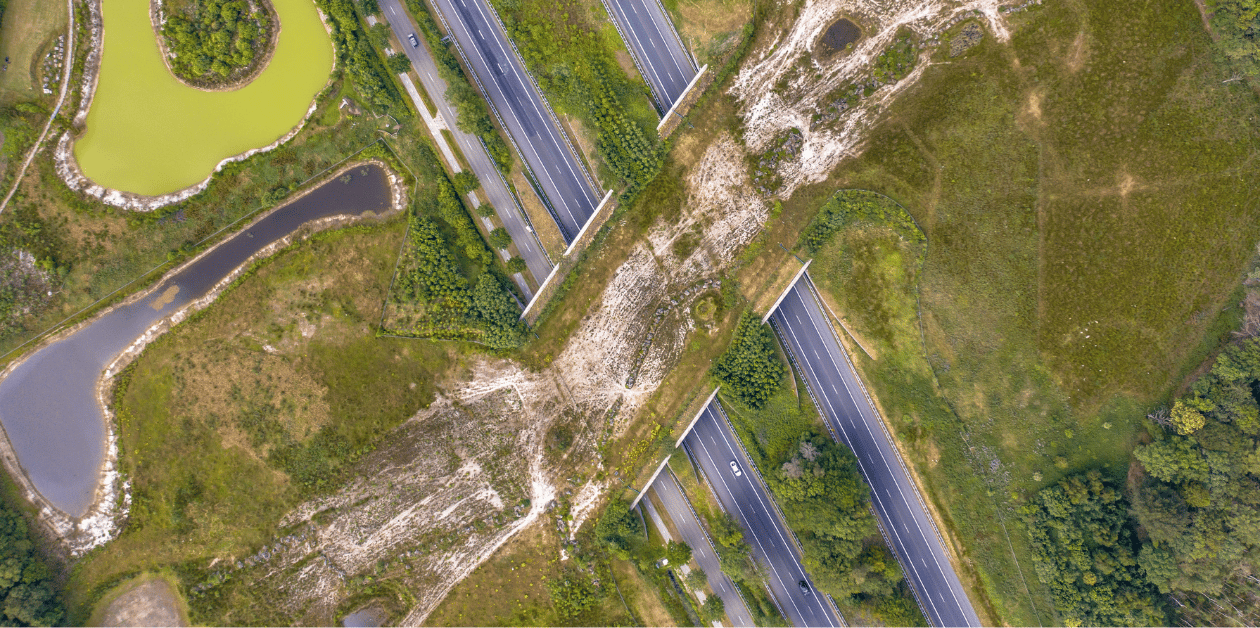
Connecting Wildlife Habitats for Virginia’s Flora and Fauna
Wildlife must be able to move through our landscapes to acquire resources, find genetically diverse mates, and adapt to a changing climate. Roads, development, and other infrastructure can impede wildlife movement and create dangerous scenarios on our roadways for both wildlife and people. Virginia continues to build a network of connected landscapes and reduce human-wildlife conflict with the recent release of its Wildlife Corridor Action Plan (WCAP). However, funding and additional policy tools to empower our agencies to fast-track WCAP implementation are still needed to maintain and create resilient ecosystems in the Commonwealth.
THE CHALLENGE
Locations where infrastructure cuts through wildlife habitat and where roads and streams intersect – “stream crossings” – present barriers to wildlife movement and fragment habitat. For terrestrial wildlife, this can result in fatal wildlife vehicle collisions with far-reaching consequences of biodiversity loss and disruption of delicate ecosystems. In some cases, wildlife-vehicle collisions result in severe injuries or fatalities for drivers and passengers. Virginia experiences a high number of these collisions each year. We
are considered a “high-risk state” for deer-vehicle collisions, “with more than 60,000 incidents per year according to insurance claims estimates.” This includes 10,000 serious human injuries and 200 fatalities each year. Deer collisions are also becoming more expensive, with the most recent national estimates costing almost $20,000 per collision. VIRGINIA IS A “HIGH-RISK STATE” FOR DEERVEHICLE COLLISIONS WITH MORE THAN 60,000 INCIDENTS PER YEAR.
For aquatic wildlife, stream crossings are a leading cause of habitat fragmentation – particularly when culverts are undersized. According to the North Atlantic Aquatic Connectivity Collaborative database, of nearly 2,500 stream crossings assessed throughout Virginia from 2015 to 2023, 57% posed a barrier to fish passage. Specifically, 1,377 stream crossings, out of the 2,418 assessed, posed either a minor barrier, moderate barrier, significant barrier, or severe barrier. Recognizing the far-reaching severity of Virginia’s
habitat fragmentation issues, the Virginia Department of Wildlife Resources, Virginia Department of Conservation and Recreation, Virginia Department of Transportation (VDOT), and the Virginia Department of Forestry recently released its WCAP highlighting several potential strategies and opportunities to further study and mitigate wildlife-vehicle conflicts and improve habitat connectivity for terrestrial and aquatic species.
THE SOLUTION
Fortunately, creating various types of wildlife crossings can improve habitat connectivity, motorist safety, and the flood-resilience of infrastructure. Wildlife crossings have already proven themselves an effective solution in Virginia. A Virginia Transportation Research Council study monitored wildlife-vehicle collisions before and after the agency erected directional fencing intended to funnel deer to culverts. Deer-vehicle collisions in the area fell by an average of 92% after the fencing was installed.6 While wildlife overpasses are what the general public usually envision when they think of a crossing, wildlife underpasses through large culverts and beneath bridges can often provide a less expensive and equally effective solution, as
is evidenced by this example. At stream crossings specifically, culvert enlargement projects can include affordable dry passage features, making the projects beneficial for both aquatic and terrestrial wildlife species. Moreover, enlarged culverts accommodate more water flow, which increases infrastructure
resiliency during flood events, and results in less long-term maintenance costs. As a result, improving culvert crossings can increase habitat connectivity, public safety, and climate resiliency benefits for the Commonwealth. To achieve these mutual benefits, Virginia should adopt policies that require agencies to include wildlife passage features when pursuing bridge or culvert improvement projects in known connectivity hotspots. VDOT has already recommended that bridge designs should accommodate a 20% increase in rainfall intensity and 25% increase in discharge to account for future climate change impacts. Additionally including wildlife crossing infrastructure standards into Virginia’s culvert and bridge design standards would simultaneously increase the environmental and public safety benefits provided by these projects. At a minimum, wildlife crossing infrastructure features should be required in the above construction projects that take place in Virginia’s priority connectivity areas identified in its WCAP.
*This information was pulled from Virginia Conservation Network’s 2024 Common Agenda, representing the policy agenda of more than 160 organizations across the Commonwealth. This book provides an in-depth analysis of the conservation issues facing Virginia and provides practical, state-level policy solutions to keep us moving in the right direction. Wild Virginia is a yearly contributor to VCN’s policy recommendations. View the full document here.